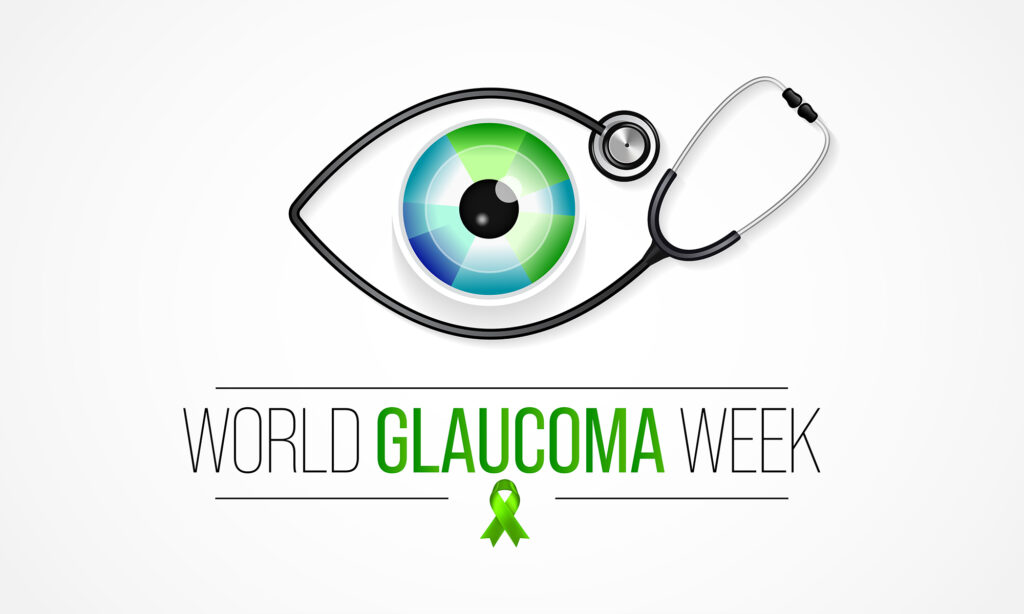World Glaucoma Week is an initiative that began with the collaborative efforts of the World Glaucoma Association (WGA) and the World Glaucoma Patient Association (WGPA). It evolved from World Glaucoma Day, which was first commemorated on March 6, 2008. The theme for World Glaucoma Week 2024 is “Uniting for a Glaucoma-Free World.”
This year’s week-long campaign is a platform for eye care professionals, health organizations and the medical device and healthcare industry to share the latest knowledge and innovations being explored and tested in the fight against glaucoma. This event also focuses on educating the public on the importance of regular eye screenings and advocating for policies that encourage better access to eye care.
Impact of Glaucoma: Facts and Risk Factors
Glaucoma is a condition known to compromise the optic nerve over a long period of time and often presents no symptoms until there is considerable loss of vision. Glaucoma is known to disproportionately affect African American and Latino populations, with a prevalence nearly six to eight times higher than that in Caucasians.
Glaucoma is also the second leading cause of blindness with open-angle glaucoma (OAG) being the most prevalent type in the population. Major risk factors identified for glaucoma include increased intraocular pressure (IOP), family history of glaucoma, old age, African ancestry and certain medical conditions such as diabetes and hypertension.
According to the BrightFocus Foundation, over 3 million Americans and close to 80 million people worldwide continue to live with glaucoma. The National Eye Institute projects that the incidence of glaucoma will rise by 58 percent in the US by 2030.
By 2020, 76 million people had primary open-angle glaucoma (POAG), the most common form of the disease, with the number expected to increase to 111.8 million by 2040.
Despite effective treatment options, most cases of glaucoma remain undiagnosed. In certain populations, up to 50 percent of individuals are unaware that they have glaucoma.
Innovations in Glaucoma Detection
Techniques such as optical coherence tomography (OCT) can now provide detailed views of the optic nerve and the retinal nerve fiber layers. This, in turn, allows for earlier and more precise detection of glaucoma.
Biomarker testing is being pursued to identify biological signs of the disease and provide an approach to develop personalized treatment plans for each patient.
Artificial intelligence (AI) is also expected to help analyze diagnostic images and revolutionize glaucoma screening and monitoring. AI-based algorithms can be trained to detect subtle changes with time. As this technology continues to evolve, it is expected to help identify glaucoma in its nascent stages of development.
Therapeutic Developments Related to Glaucoma
The introduction of new classes of glaucoma medications, such as prostaglandin analogs, nitric oxide-donating drugs and Rho kinase inhibitors, has added to the pharmacological options available for managing IOP. Some of their activities and use in glaucoma treatment are mentioned below:
- Prostaglandin analogs increase the outflow of fluid from the eye, reducing IOP
- Beta-blockers reduce the production of fluid in the eye
- Alpha agonists decrease fluid production and increase drainage
- Carbonic anhydrase inhibitors decrease fluid production in the eye
- Rho kinase inhibitors increase the outflow of fluid from the eye and reduce IOP
Newer medications such as latanoprostene bunod combine the effect of prostaglandin analogs with nitric oxide to provide an additional IOP reduction, whereas netarsudil has shown to be effective in reducing IOP through the Rho kinase pathway.
Another important development has been the use of sustained-release medications implanted into the eye. These medications deliver a consistent dose over months or even years, thus eliminating the need for eye drops on a daily basis. These advancements have not only helped improve the precision of glaucoma management but have also considerably improved patient compliance and quality of life.
One example is Glaukos’ iDose TR, an intracameral implant designed to provide continuous drug therapy inside the eye for up to three years. These innovations promise to reduce complications and expedite recovery, thereby enhancing patient outcomes.
XTALKS WEBINAR: Addressing Ophthalmology Clinical Trial Design and Effective Data Monitoring Committee Strategies
On-Demand: Thursday, February 8, 2024
Register for this free webinar gain insights into statistical data strategies for ophthalmology clinical trials and learn best practices for establishing and reporting ophthalmic data.
Novel therapies such as biannual injections, which use a biodegradable material to create a hydrogel that facilitates fluid outflow from the eye, may reduce the need for daily eye drops or surgery as it has the potential to sustain pressure reduction for several months.
Hormone-based therapeutics aim to delay glaucoma progression by enhancing estrogen’s potential protective effects. Immunotherapies, which are at an early stage of development for glaucoma, have the potential to correct immune system anomalies associated with glaucoma.
Furthermore, there are ongoing studies on neuroprotective agents that could help preserve optic nerve health and possibly restore vision lost to glaucoma. There are also studies examining gene therapy-based techniques to repair or replace genetic defects contributing to this disease.
The Glaucoma Foundation has funded studies focusing on two specific areas within gene therapy. Firstly, investigations into the lipidome in pseudoexfoliation glaucoma aim to understand how lipid metabolism influences the development or progression of this specific type of glaucoma, characterized by abnormal protein deposits in the eye. Secondly, other funded research is exploring differential gene expression regulated by DNA methylation. By identifying genes affected by DNA methylation in glaucoma, researchers hope to uncover new insights into the disease’s molecular mechanisms.
In addition, the Glaucoma Research Foundation’s Catalyst for a Cure initiative has helped shift the focus from traditional treatments that manage IOP to innovative approaches aimed at restoring, replacing or regenerating the damaged optic nerve itself. This change in direction could lead to treatments that not only prevent further damage but also potentially reverse vision loss.
Related: Walgreens, CVS Among Companies Issued FDA Warning Letters Over Unapproved Eye Products
Surgical Developments Related to Glaucoma
The therapeutic landscape for glaucoma has been significantly transformed by the advent of minimally invasive glaucoma surgeries (MIGS), which offer reduced IOP with fewer complications and faster recovery times. Alongside MIGS, micro-stents like Glaukos’ iStent inject devices have revolutionized surgical approaches to lowering IOP.
Additionally, laser-based therapies such as selective laser trabeculoplasty (SLT) have emerged as repeatable outpatient alternatives to traditional treatments like eye drops or invasive surgeries. SLT, renowned for its non-invasive nature, uses laser technology to open the drainage angle, facilitating fluid outflow from the front part of the eye and effectively lowering IOP.
Complementary laser procedures like argon laser trabeculoplasty (ALT) and laser peripheral iridotomy (LPI) further enhance fluid outflow, catering to different types of glaucoma.
Moreover, surgical innovations continue to evolve, aiming to improve aqueous outflow. For instance, Glaukos’ iAccess microgoniotomy device and trabectome surgery are designed to enhance drainage pathways within the eye. In addition, advancements such as AbbVie’s XEN45 Gel Stent target increased subconjunctival filtration, further diversifying treatment options for patients with glaucoma.
World Glaucoma Week is a campaign that helps share the latest innovations in glaucoma treatment, as well as provide insights and spread awareness of glaucoma and its effects. As we commemorate World Glaucoma Week 2024, the collaborative efforts between clinicians, researchers and patients continue to ignite hope and inspire further innovation in the fight against glaucoma. With each passing year, the advancements in diagnosis, treatment and pharmaceutical development bring us closer to a future where the vision loss associated with glaucoma can be slowed, or even halted or reversed.












Join or login to leave a comment
JOIN LOGIN